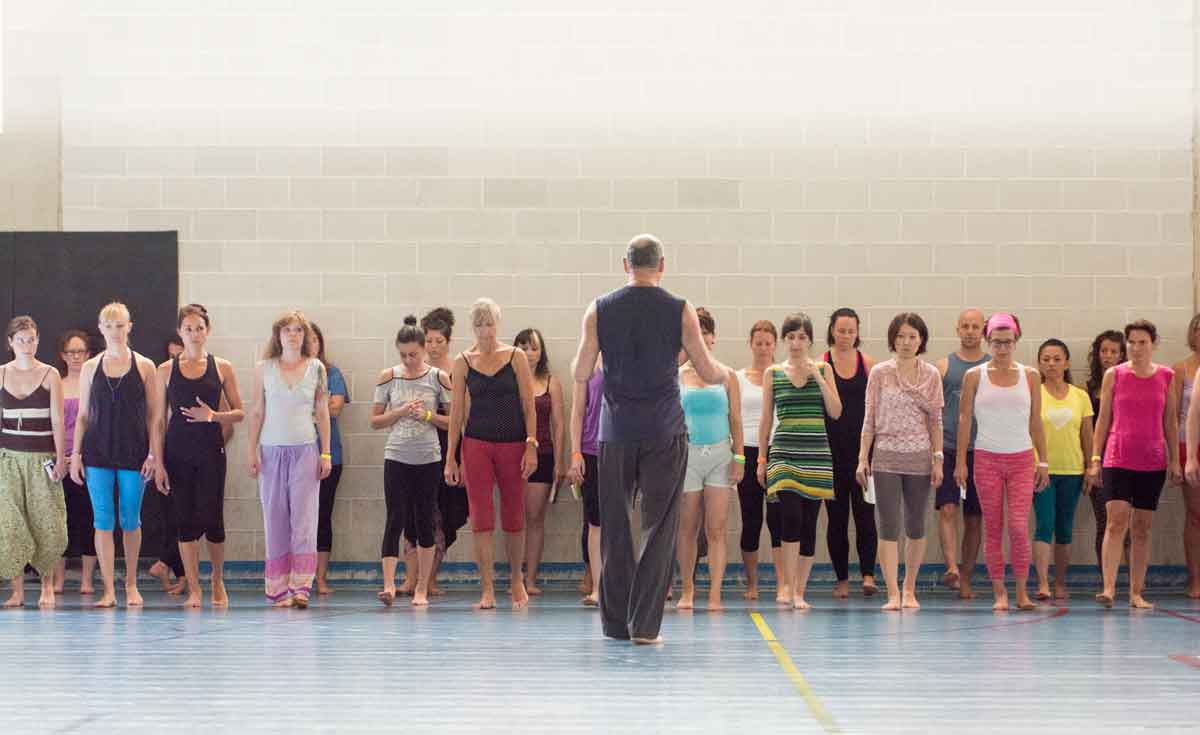You thought you were breathing in Trikonasana, but that was only with your lungs. When you tap into cellular breathing, as we did in the second session of The Breathing Project’s Yoga Anatomy: Practices course, then a whole new arena of sensation – and potential frustration – opens to you.
Taught by Amy Matthews, an expert in not just anatomy but in the “embodiment” of all the body’s systems, this asana class invited the cells in your hands and feet to breathe, just as much as the lung tissue. How can we access these seemingly unconscious cells?
Amy began with a review of basic cell anatomy, providing visuals for the complex processes happening deep within us at every moment. On the most basic level, every cell must inhale nourishment from it’s surroundings, and exhale waste. It is dependent on its environment to supply that nourishment and carry that waste away, so it can continue to burn energy while not becoming toxic.
The cell wall is the semi-permeable barrier that can either allow or reject incoming matter (proteins, lipids, carbohydrates) much like the bouncers at a popular nightclub. The place between the velvet ropes where decisions get made is the place where we, as yoga students/embodiment novices, got to explore. What do we let in? What gets to sit and wait on the edge? What do we let go of? What identity do we create in the process?
With images of cellular respiration in mind, we could think about the more subtle sensations in our toes, imagining that those cells were participating in our down dog as much as our spine or sit bones. Crossing those velvet ropes into a new inner universe, we might even stop “thinking” about the cells, and be able to listen to them. Indeed, several students found that they had altered states of consciousness while moving and breathing into all their cells.
However, some of us felt confused or disoriented, daunted by the sheer number of cells (trillions?) we could listen to. Lest we thought that we were unsuccessful in the practice if we couldn’t hear them speak, Amy reassured us that everyone was “100% successful” in cellular breathing. There was no wrong way to breathe; our cells are doing it all the time or we would not be alive.
Yet, “along with no wrong way, there is also no right way, and that can be terrifying,” Amy pointed out. As professional teachers used to instructing our classes how to do a pose, this was a huge philosophical shift. Can we find another way to teach asana, one that encourages exploration rather than imitation?
These are the big questions posed by our smallest units. Let’s take a moment and listen to what they have to say…


 Created specifically for one-on-one yoga and movement education. There's no risk since the first month is free, and you can cancel at any time!
Created specifically for one-on-one yoga and movement education. There's no risk since the first month is free, and you can cancel at any time!
Comments (2)
Great article!
I’m blessed to teach part time at a community college and under the math and sciences dept.so I’ve taken the opportunity to transpire these thoughts onto the walls of my shared room(judo/karate)I’ve put visuals of bones,muscles, ligaments,tendons ,tissues and now I will do cells(reviving my antique histology
books….or pull out my iPad2 and the Visible Body App.;))
I have the same students for 16 weeks so going cellular would probably be after 8 week sessions for most.At this point there’s a shift of I really “love” this
yoga thing or they drop the class.Thank you again for appearing on my hi-tech device!
“Can we find another way to teach asana, one that encourages exploration rather than imitation?”
Like all things in life, “it depends”. But I will try.
Thank you so much for the thought provoking article.
I am teaching a detox class in the morning and these new perspectives will certainly be with me.
Especially since the irony is that yoga is 90% waste removal anyway.
Maybe I will have a better answer for you tomorrow. Or not.
Metta-
Susan
Comments are closed.